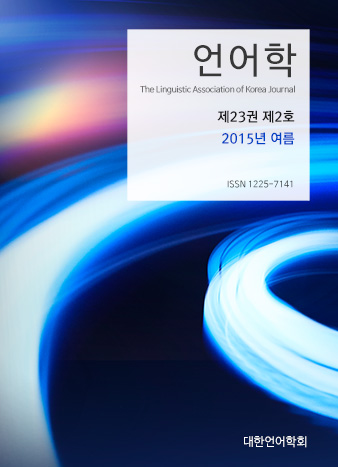대한언어학회 전자저널
Abstract
Ahn, Joohoh. (2015). A Study of the endings {-nka} type and {-na} type based on Spoken Korean Corpus. The Linguistic Association of Korea Journal, 23(2), 133-156. This paper surveys the distribution, combining conditions and usage patterns of the {-nka} type and {-na} type endings in the corpus on spoken Korean. Currently, in Korean grammar rules, {-nka} type, {-na} type endings are explained as indicating humility and {-nkayo}, {-nayo} endings indicate respect. Though exceptions are noted, the {-nka} type endings are supposed to be added to the adjective stems with a coda. And {-na} type endings are added to the verb stem. But spoken Korean language is different than the written corpus. In spoken Korean, {-na} type endings were employed 5823 times compared to 791 times for the {-nka} type endings. In spoken Korean, there are no constrains on the combination on {-na} type endings; The {-na} type endings are added to the verb stem, prefinal endings like {-eoss-, -si-} and even adjective stems. This paper demonstrates that {-na} type endings and {-nka} type endings have been integrated into {-na} type endings.
Keywords
# 분포(the distribution) # 결합제약(combining conditions) # 사용양상(usage patterns) # {-ㄴ가}형 어미( {-nka} type endings) # {-나}형 어미({-na} type endings) # 구어말뭉치(Korean Spoken Language Corpus) # 사&
